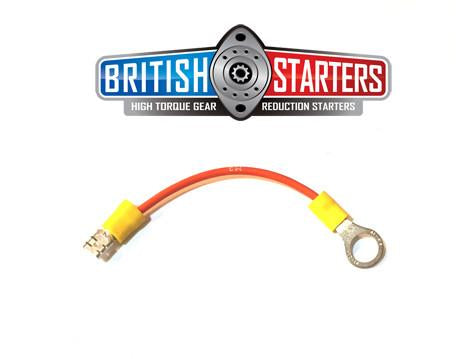Well I did it again. I bought and installed my new high torque starter over a year ago and am starting to wire the car back. But now I cannot find the instructions so I know what to do with the wire lead that attaches to the push terminal on the side. I did search and still a little confused because some seem to be doing different things with that wire (and solenoid). It appears from some of what I have seen that this short wire simply plugs in and then attaches to the post where the heavy wire attaches at the top. Is that correct? If I do that then I simply attach the battery cable and the heavy lead from the starter on the same terminal on the original starter solenoid. Is that correct? Anything else? Is this the best way? Bruce
-
The Roadster Factory Recovery Fund - Friends, as you may have heard, The Roadster Factory, a respected British Car Parts business in PA, suffered a total loss in a fire on Christmas Day. Read about it, discuss or ask questions >> HERE. The Triumph Register of America is sponsoring a fund raiser to help TRF get back on their feet. If you can help, vist >> their GoFundMe page.
-
 Hey there Guest!
Hey there Guest!
If you enjoy BCF and find our forum a useful resource, if you appreciate not having ads pop up all over the place and you want to ensure we can stay online - Please consider supporting with an "optional" low-cost annual subscription.**Upgrade Now**
(PS: Subscribers don't see this UGLY banner)
TR4/4A High Torque Starter Wiring
- Thread starter bammons
- Start date
Share this page
Similar threads
Similar threads
-
-
-
-
-
-
-
-
-
-
-
-
-
-
Gear Reduction High-Torque Starters: Inertia or Pre-engaged?
- Started by Lin
- Replies: 4
-
-
-
-
-
-
-
-
-
-
1973 TR6 oil and filter changed - oil shooting out from high pressure valve?
- Started by MartyN
- Replies: 15
-
-
-
-
-
TR2/3/3A High beams seem to be stuck on when the headlights are turned on?
- Started by karls59tr
- Replies: 3
-
-
-
-
-
-
-
-
-
-
TR6 1970 High Back Seats for TR6 - Side bolste wires squabs neededr
- Started by Boxsterg
- Replies: 3
-
-
-
-
-
-
-
-
-
-
-


 smilie in place of the real @
smilie in place of the real @
 Pretty Please - add it to our Events forum(s) and add to the calendar! >>
Pretty Please - add it to our Events forum(s) and add to the calendar! >> 
![IMG_1956[1].JPG](/community/data/attachments/56/56849-14cf7eda875d363cf43d5f9cbe9e56fe.jpg)



 A friendly reminder - be careful what links you click on here. If a link is posted by someone you don't know, or the URL looks fishy, DON'T CLICK. Spammers sometimes post links that lead to sites that can infect your computer, so be mindful what you click.
A friendly reminder - be careful what links you click on here. If a link is posted by someone you don't know, or the URL looks fishy, DON'T CLICK. Spammers sometimes post links that lead to sites that can infect your computer, so be mindful what you click.